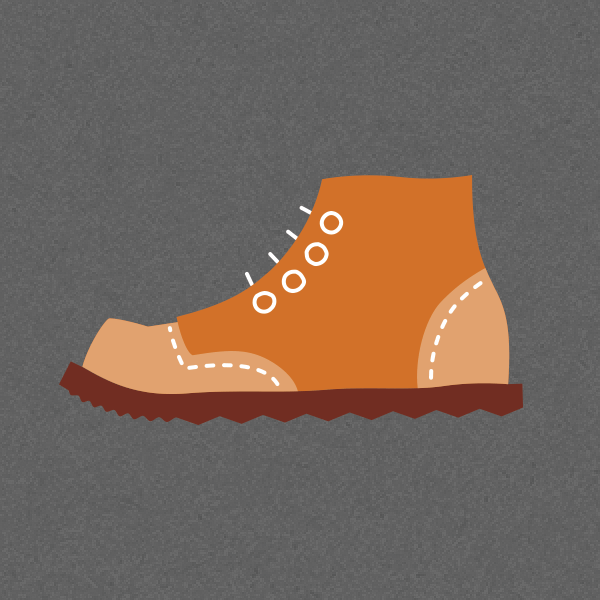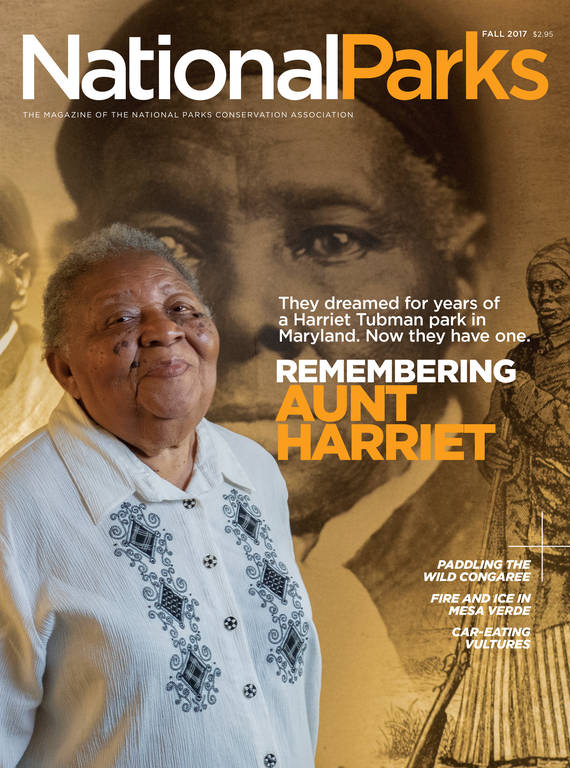Fall 2017
Nature Fix
Tired of feeling like the only person of color on the trail, Ambreen Tariq is trying to make the great outdoors welcoming to all, one photo at a time.
In 1991, Ambreen Tariq and her family boarded a plane in India and touched down in Minnesota in the middle of winter. They had never seen snow before and hadn’t packed coats or gloves. Those first cold, dark months were tough for the 8-year-old girl and her family. Her parents both worked two jobs. The kids at school bullied Tariq, mocking her brown skin, spicy lunches and Indian accent.
Then spring came, and Minnesotans headed outside to fish and camp. Tariq’s parents, eager to embrace American culture, decided their family would, too. They couldn’t afford a lengthy vacation, but they could buy a tent and a couple of sleeping bags. Tariq loved every bit of camping — the solitude, the satisfaction of pitching a tent and cooking over a fire. “It was such a reprieve,” she says. “Camping was the one moment when everything else just kind of shut out.”
Yet even out in nature, they couldn’t escape the feeling of otherness. Children gawked at their Indian food. Other families ignored them. Once Tariq started college, she gave up camping. As a Muslim American student in the years after 9/11, she was focused on standing up for civil rights. And, she says, she found it hard to tune out the barrage of messages, both subtle and overt, that “the outdoors is for white people.”
But after graduating from law school and getting married in 2011, Tariq felt pulled again into the wilderness. She and her husband, Nader Jameel, a doctoral student in biology, had settled in the Washington, D.C., area, a few hours’ drive from many expansive public lands. They bought some simple gear and headed out on their first shared camping trip — a bit of a fiasco since they arrived later than they had planned, brought the wrong hammer for tent stakes and struggled to start a fire. But Tariq and her husband went out again and again, camping in Shenandoah National Park in Virginia, and, as the years passed and their skills progressed, in places such as Arches National Park and Canyonlands National Park in Utah.
Yet that old sense of isolation was still there. As people of color and Muslim- Americans, Tariq says she and her husband often felt uncomfortable in the rural communities surrounding parklands. They rarely saw people who looked like them on their outdoor adventures.
Statistics show that people of color are underrepresented on public lands. While minorities make up about 40 percent of the population, they comprise only 20 percent of national park visitors, according to a 2009 National Park Service survey.
Last year, Tariq, who works for the federal government, was moved by the Park Service’s centennial celebration and the agency’s call to make public lands more welcoming to everyone. She started an Instagram account, @BrownPeopleCamping, to highlight the wilderness experiences of people of color and to connect with others trying to promote diversity in the outdoors. “I find it hard sometimes explaining to people in my community why I like to camp. Maybe I should stop trying to use so many words and just use my perspective instead,” she wrote in one of her first posts. “When you go to places you believe you don’t belong is when you see the profound.”
Tariq, 34, hopes to sweep away old stereotypes about outdoorsy people. Hikers, climbers and kayakers aren’t just skinny, youthful white people — despite what you see in gear catalogs. Nor does the outdoors belong to fans of extreme sports. “I openly and unapologetically declare that I’m a Muslim American city girl, and I am all about the outdoors,” she says. “We need to celebrate people for getting outdoors and doing it however they want.”
In her posts, Tariq has explored the struggles people of color face when traveling to parks and other public lands. She has written about her own experiences and those of others she has encountered, such as a group of Muslim teen environmentalists or a 97-year-old Japanese American woman whose family was sent to an incarceration camp during World War II. “There is some very deep-rooted and dark history for some people of color in the outdoors,” she says.
Hers is one of several initiatives aimed at increasing the presence of minorities in the outdoors. Outdoor Afro organizes local chapters around the country for black people who love to camp, hike and raft. Since 2013, California outdoors advocate Teresa Baker has coordinated the annual African American National Parks Event, inviting black people to visit a park and post a photo on social media.
Tariq’s posts have touched a nerve. More than 8,500 people now follow her on Instagram. Others have adopted #brownpeoplecamping and used it in their own social media posts. And while some white people have made derogatory comments, the vast majority have pledged to make the outdoors more welcoming to all. “I have so much respect for you and your message!!! For every hater there’s folks like me listening and learning,” commented one reader.

National Parks
You can read this and other stories about history, nature, culture, art, conservation, travel, science and more in National Parks magazine. Your tax-deductible membership donation of $25 or more entitles…
See more ›“The project itself has taken on a life of its own, and that’s been extremely empowering for me,” Tariq says. In July, Alaska Airlines and Airstream sponsored Tariq and her husband on the first of two trips (the second will be to California), and the couple headed to the Pacific Northwest. In Olympic National Park, they hiked through the lush green Hoh Rain Forest and camped on rocky Rialto Beach. They climbed the steep trails of Mount Rainier and cooked fresh salmon, Korean beef short ribs and tandoori chicken over a campfire.
Those experiences outdoors reverberate long after they return home, Tariq says, and she dreams of eventually visiting all 59 national parks. She would love to see Montana and Wyoming and visit Maine’s Acadia National Park — and document her adventures along the way. She hopes that her efforts will empower other people of color to explore the outdoors.
“What’s left to discover in this fantastic world?” she wrote in one post from her Pacific Northwest trip. “I have seen oceans and I have seen deserts. I have been caught in sand storms and lightning storms. I have slept in swamps and at the edges of canyons. What more is there to make me gasp, wide-eyed in wonder?”
About the author
-
 Julie Scharper Contributor
Julie Scharper ContributorJulie Scharper is a freelance writer and journalism professor in Baltimore, Maryland.



